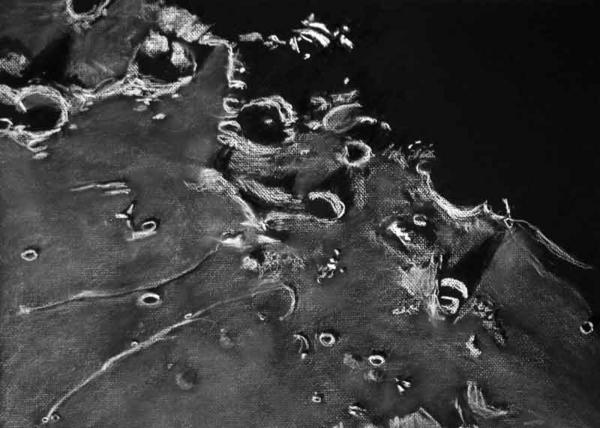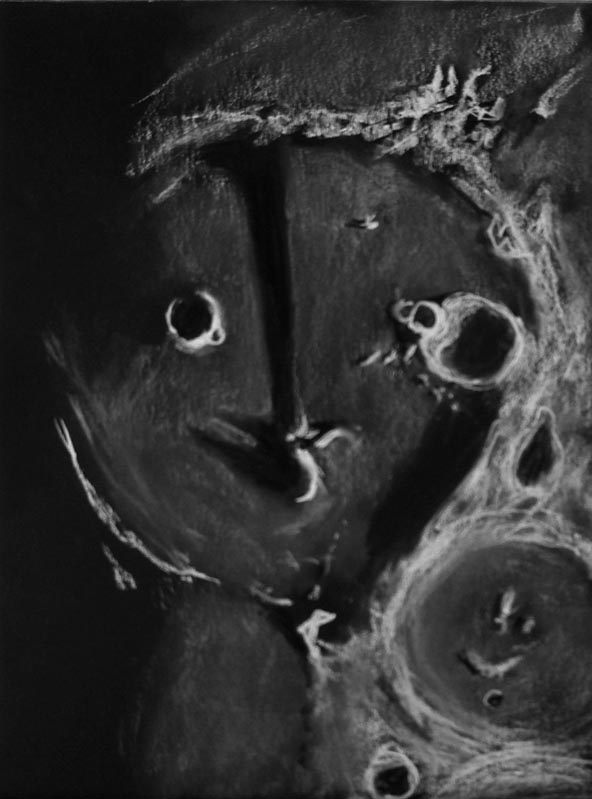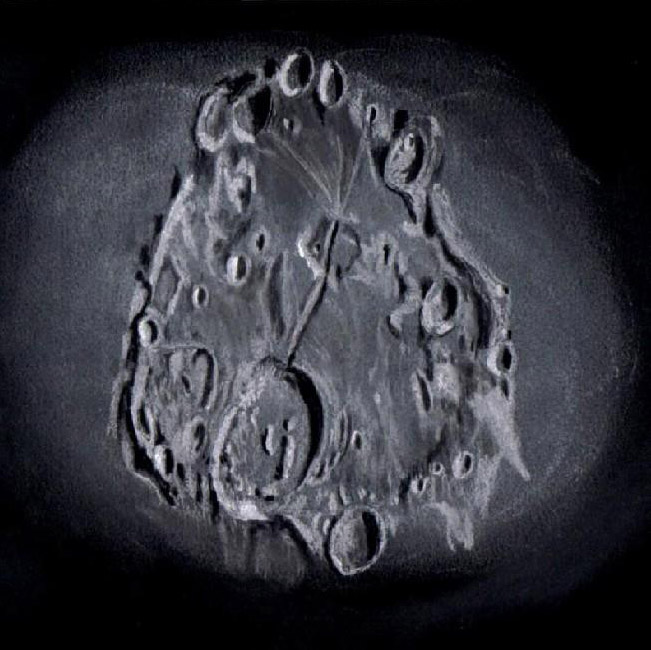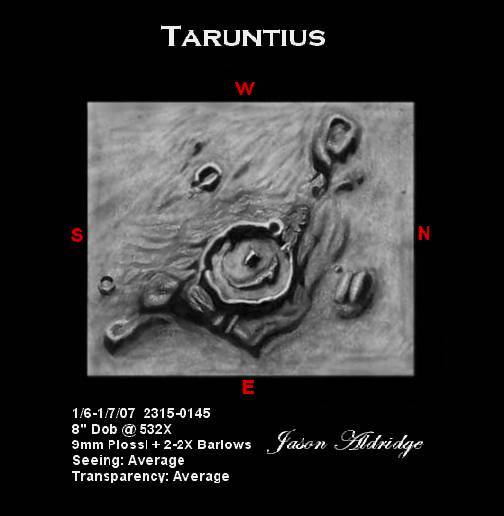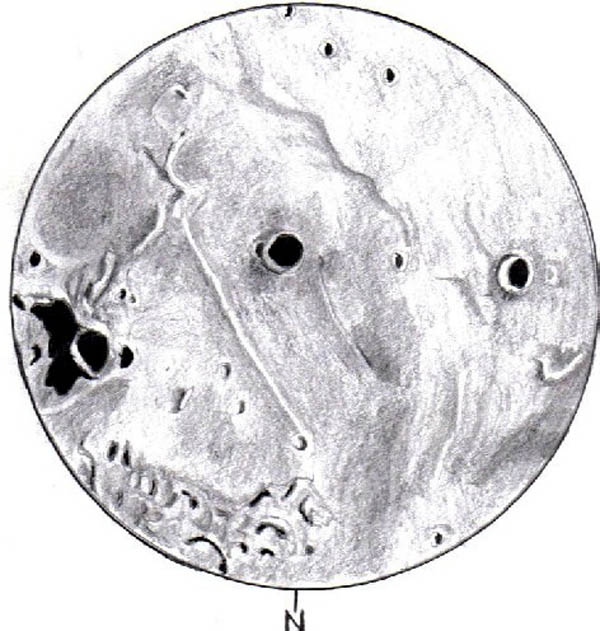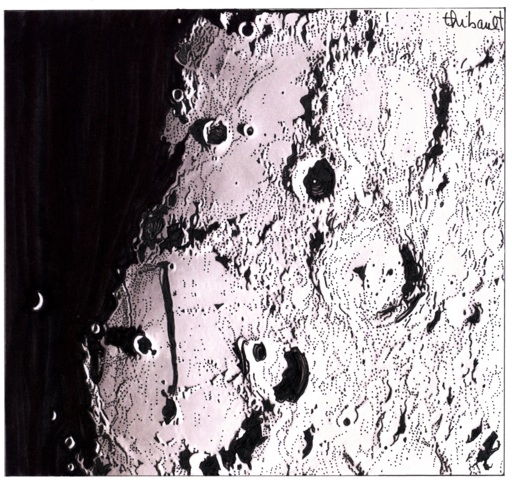
The Straight Wall
Sketch and Details by Jacques Thibault
Find enclosed one of my many drawings of the Straight Wall.
I used my D & G refractor, 127 mm achromatic, f/12, mounted on
Losmandy GM8.
18 mm and 12 mm Radian eyepieces and T-V 2X Barlow. (range : 84X
-260X, mostly 130X)
Conditions : Seing 4/5, from my backyard in Sainte-Foy, Quebec.
My working method :
1-Prior to observing, I make an outline drawing with the help of the
Hatfield Atlas. I use the outlined maps. This takes care of the
proportions and locations of the craters.
That way, I am able to concentrate on the lighting.
2-At the eyepiece, I note the shades of gray with Ansel Adam’s zone
system (0-10).
3-Back in the studio, I make a new outline on drawing cardstock (very
lightly, with a 2H graphite pencil).
4-I then use dry pastel to impart the general shade of the drawing. I
really push on the stomp to dye the paper.
5-I give a light coat of fixative to protect the pastel and to make
sure the ink will catch on the pastel surface.
6-Then I use India ink for the large black zone and different
Letraset markers to finish the drawing.
I also use an electric eraser to clear the white and to create texture.
During the drawing process I will browse in my many books on the Moon
and a wide collection of pictures taken from the Internet and other
sources.
I am not trying to make scientific observations. I just like being
alone under the stars, late in the night or early before sunrise :
it’s like walking alone by the ocean. I chose to draw because it’s by
far the best way to relive the experience. I dont make astro
photographs because I dont want to transform what is for me a
spiritual and relaxing activity into a technical marathon. I share my
drawings with my family and friends.
The very best seing to you all!
Jacques Thibault
Quebec.
I saw so many beautiful drawings on your fabulous site that I felt
that I had to send something as a token of my gratitude. Merci beaucoup.
Jacques


